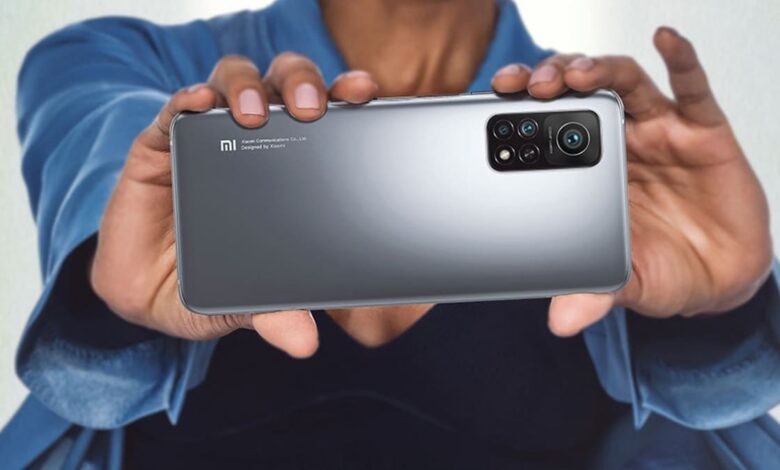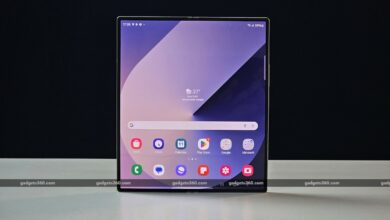Indian smartphone market saw highest ever shipments, revenue in 2021: report

Smartphone shipments in India grew at an all-time high with a year-on-year increase of 11 percent to 169 million units in 2021, according to a market research report. The significant growth in smartphone shipments is accompanied by a record rise in the revenue generated by the market. While Xiaomi maintained its leadership in the smartphone market in India, Samsung registered its highest-ever average selling price (ASP) in the year. Shipments of 5G phones in the country also marked the highest-ever growth in 2021. Besides smartphones, the overall mobile phone market also grew in 2021. However, shipments of feature phones saw flat growth.
Market research and consulting firm Counterpoint on Monday reported that high replacement demand, coupled with increasing affordability of mid- and high-end smartphones thanks to promotions and discounts and better financing options, has led to an 11 percent YoY growth in the Indian market in 2021.
On the revenue front, the company said the average selling price for smartphones in the country grew 14 percent year-on-year in 2021, reaching an all-time high of $227 (around Rs. 17,000).
Counterpoint also noted that the Indian smartphone market revenue crossed $38 billion (approximately Rs 2,83,900 crore) in 2021, registering a growth of 27 percent year-on-year.
Xiaomi continued to lead the market in India in 2021, with a two percent year-on-year growth. The Chinese company grew a whopping 258 percent in the premium segment, which includes phones priced above Rs. 30,000. However, component shortages due to the COVID-19 pandemic in the second half of the year impacted volumes in the mass market segment, according to Counterpoint.
After Xiaomi, Samsung remained the second largest player in the Indian market. The South Korean company grew eight percent year-on-year in terms of shipments. The latest report also shows that Samsung emerged as the top brand in 5G smartphone shipments in the country in Q4 2021.
Similarly, Samsung led the Rs. 20,000 – Rs. 45,000 segment with 28 percent share. The company’s foldable device shipments that include the Galaxy Fold and Galaxy Flip series grew 388 percent year-on-year in the year, Counterpoint noted.
In 2021, Realme became the fastest growing brand in the country, with a year-on-year growth of 20 percent. The company also secured the second position in the second quarter of 2021, the company said.
Besides Realme, Apple was one of the fastest growing brands in the country in 2021. The iPhone maker received a 108 percent year-on-year growth in shipments. It also maintained leadership in the premium segment with a 44 percent share, according to Counterpoint.
As for 5G smartphones, the latest report shows that 5G shipments in the country registered a year-on-year growth of 555 percent in 2021. This was because most companies launched their 5G phones last year.
Vivo emerged as the country’s top 5G smartphone brand in 2021, capturing 19 percent share, marking a two percent YoY growth. Counterpoint also noted that Vivo remained the leading player in the offline segment, besides strengthening its hold in the online segment through its sub-brand iQoo.
Vivo’s sister Oppo came in fifth place in the market, with a six percent year-on-year growth. According to Counterpoint, the company was the fastest growing brand in the premium segment.
Besides Vivo and Oppo, Chinese rival Transsion Group, which has the Itel, Infinix and Tecno brands in the market, registered a 55 percent YoY growth in India in 2021, crossing the 10 million shipment mark in a single year. The trio also retained their third position in the overall handset market in India, with Itel being the largest player in the feature phone segment for the past two consecutive years, the report said.
Oppo subsidiary OnePlus achieved its highest ever shipments in the country in 2021, according to Counterpoint. The company recorded a year-on-year growth of 59 percent and crossed five million shipments. The growth was led by the OnePlus Nord series.
OnePlus also led the affordable premium segment that includes phones ranging from Rs. 30,000 – Rs. 45,000 segment. The company also captured a 19 percent share and the second position in the premium segment, according to Counterpoint.
“Demand outpaced supply in the last two quarters of 2021,” Counterpoint Senior Research Analyst Prachir Singh said in a prepared statement. “During Q4 2021, the smartphone market declined by eight percent year-on-year. We expect the supply situation to improve going forward and return to normal by the end of Q1 2022.”
According to Shilpi Jain, research analyst at Counterpoint, price hikes in the budget segment due to higher component prices, increasing focus of OEMs on the premium segment and increased demand for mid-range and premium smartphones due to growing usage and availability of financing options have contributed to the rising average selling price (ASP) of smartphones in India.
“Local manufacturing has recovered and contributed to 98 percent of shipments in 2021, compared to 90 percent in 2020,” Jain said. “The PLI program has been a tremendous boost to the Indian mobile manufacturing ecosystem, attracting top players like Apple and Samsung to expand their ‘Make in India’ footprint and make India their export hub.”
She added that the country’s mobile phone exports also grew by 26 percent year-on-year in 2021.
Unlike the smartphone market alone, the overall mobile phone market in the country was once again dominated by Samsung in 2021, with the company taking a 17 percent share.
Shipments of feature phones in the country reached 86 million units in the year. While Itel led the market, Lava, Samsung and Jio were the remaining contenders in the list of top four feature phone vendors in the country, according to Counterpoint.
Canalys reported in its report last week that the smartphone market in India grew by 12 percent in 2021, despite a difficult start to the year due to the second wave of COVID-19.




